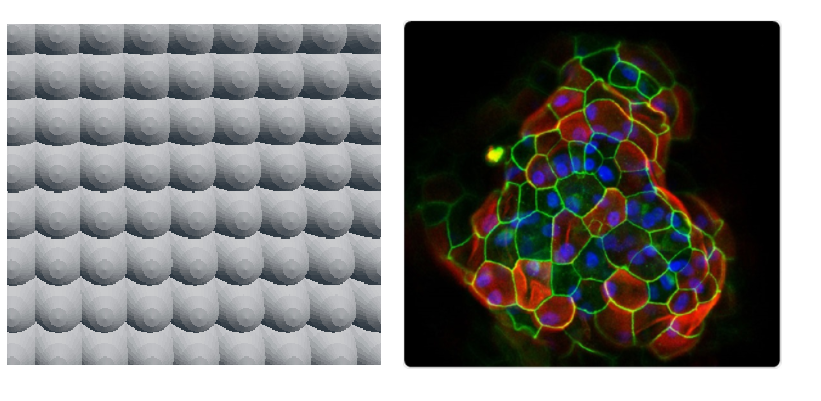I am looking for an efficient way to cover a mesh with cells (spheres) to obtain results similar to the image below (i.e. a realistic biological tissue).
It's a problem I have struggled so much and I have tried many things but I am probably missing something. The closest I have ever got to it was by sourrounding the mesh with a particle emitter (the wireframe sphere in the image below) and having the cells fall from it and stick to the mesh, like here:
The problem with this setup is that I have little control on where the cells land, and it seems I need to generate so many more than required because many overlap. Moreover, when I try with more complex shapes, cells have a hard time reaching all points and leave empty gaps:
I have also tried with the tesselate function of the tissue addon, but it leads the pattern that is generated is too "regular" (EDIT: added picture for clarity), I would need cells to be all offset to each other, and possibly adapt to each other's shape at contact points, like in the example image above.
Do you have any solutions I could try? Thank you very much in advance!












